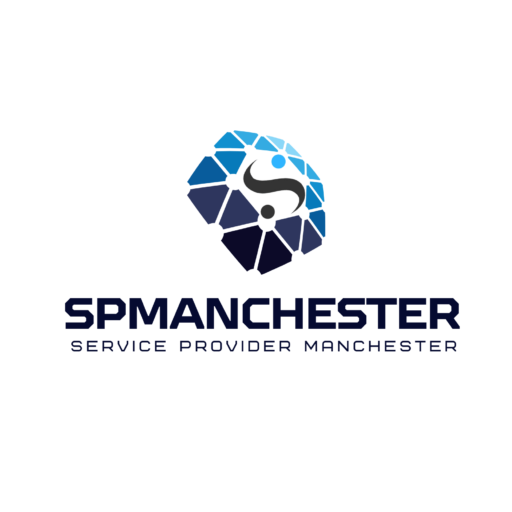
Backup & Recovery
In today’s digital age, data is one of the most valuable assets any business can have. Yet, with increasing cyber threats, system failures, and human error, the risk of data loss has never been higher. This is where a comprehensive Backup & Recovery Service website comes into play, offering users a reliable solution to protect, store, and restore critical information. An effective Backup & Recovery Service website should cater to diverse industries by providing a range of solutions tailored to meet the unique demands of each business size and type. Key services should include automated cloud backups, secure data storage, rapid disaster recovery options, and 24/7 technical support to ensure seamless data restoration when it matters most. Cloud-based backup services enable businesses to store copies of their data off-site, ensuring that even in the event of physical damage or local data corruption, all critical files remain accessible. A robust recovery process, ideally integrated into the backup platform, allows users to restore data quickly, minimizing downtime and the associated revenue loss.
An effective Backup & Recovery Service website should offer a user-friendly interface, making it easy for clients to navigate and understand the range of services offered. Key pages on the website could include a Solutions Page detailing different backup options, such as incremental, differential, and full backups, along with specialized solutions for sectors like healthcare, finance, and education that may have unique regulatory requirements. The website should also feature a Technology Page explaining the security protocols used to protect data, such as end-to-end encryption, multi-factor authentication, and compliance with standards like GDPR, HIPAA, and SOC 2. By providing transparent information on security and compliance, the website builds trust with potential clients concerned about data privacy.
For potential customers interested in learning about pricing and scalability, the Pricing Page is crucial. This page can include clear pricing tiers for different types of services, from basic backup solutions for small businesses to more comprehensive packages for larger enterprises. An interactive pricing calculator can help users customize a plan according to their storage needs, frequency of backups, and additional features like real-time monitoring and alert systems. The Testimonials and Case Studies Page should showcase stories from real customers who have benefited from the service, detailing how it helped them recover from critical data loss incidents and improve operational resilience. This builds credibility and provides assurance to new users that they are investing in a tested, reliable service.
To maximize engagement, the Resources Section can include blogs, whitepapers, and eBooks on best practices for data protection, cybersecurity trends, and the latest innovations in backup and recovery technologies. For instance, articles on ransomware protection, disaster recovery planning, and strategies for minimizing downtime during data recovery can position the company as an industry leader and educate clients on the importance of proactive data management. An FAQ Page addressing common questions about backup frequency, data recovery time, and data access control policies can be helpful for users who want to quickly learn the basics without needing to contact support. For users seeking personalized support, a Live Chat Feature or Contact Page is essential, allowing customers to get immediate answers to pressing questions or assistance with setting up or managing their backup plans.
Furthermore, offering Free Trials or Demo Videos can help potential clients experience the service firsthand, making them more likely to commit to a paid plan once they see the ease and efficiency of the system. These trials and demos can be highlighted on the homepage or through pop-ups, encouraging users to take immediate action. Additionally, the website should promote different Backup Frequencies and Recovery Point Objectives (RPO) to cater to various business needs—some companies may require backups every few hours, while others may need daily or weekly backups. The website can also detail Recovery Time Objectives (RTO), helping clients understand how quickly they can expect their data to be restored in case of a loss. Customization options can be showcased to highlight how the service can adapt to specific organizational requirements, such as supporting different file types, applications, and storage environments.
For businesses with complex needs, such as those operating across multiple locations or requiring compliance with international standards, the website should emphasize its Scalability and Flexibility. By offering hybrid solutions—combining on-premises and cloud backups—the service can accommodate diverse IT infrastructures and workflows, ensuring seamless integration with existing systems. The Partnerships Page can highlight affiliations with reputable cloud providers, hardware manufacturers, and cybersecurity firms, underscoring the service’s commitment to delivering high-quality and dependable solutions. Furthermore, offering a Backup Audit and Health Check Service as an add-on can help clients identify potential gaps in their data protection strategy, providing a valuable, proactive feature that sets the service apart from competitors.
Additionally, the Customer Portal should offer a centralized hub where users can monitor their backup status, view historical logs, manage settings, and initiate data recovery processes. A well-designed portal should be accessible from any device, allowing clients to manage their data anytime, anywhere. For increased usability, the portal could include automated reports, backup health notifications, and suggestions for optimizing backup schedules. This convenience adds a layer of accessibility and transparency that clients appreciate, knowing they can review and manage their data protection strategies independently or with minimal assistance.
To cater to security-conscious users, the Security Features Page should outline key protections against data breaches and unauthorized access. Options such as Multi-Factor Authentication (MFA), Role-Based Access Control (RBAC), and Encryption Standards are essential features for businesses handling sensitive information. Providing detailed explanations on how these security measures work not only reassures clients but also demonstrates the service’s commitment to safeguarding customer data. In case of any incidents, the website can offer resources on Incident Response and Forensics services, helping businesses understand the steps taken to analyze, resolve, and prevent future data loss events. A well-structured Service Level Agreement (SLA) section is also critical for clients who need clarity on response times, uptime guarantees, and support availability.
In conclusion, a Backup & Recovery Service website should not only offer a range of services but also educate users on the importance of proactive data management, resilience, and security. By providing clear information, transparent pricing, and customizable solutions, the website positions itself as a trusted partner in data protection. Through user-centric design and a comprehensive service offering, the site can attract businesses of all sizes, offering them peace of mind in knowing their valuable data is secure, accessible, and recoverable at all times.
Why It soft?
Unlimited support
We serve the best work
By initiating your project with SPManchester, you get a dedicated and skilled team backing you up round-the-clock. All our processes are the customer oriented, designed to reduce the cost of business operations.


